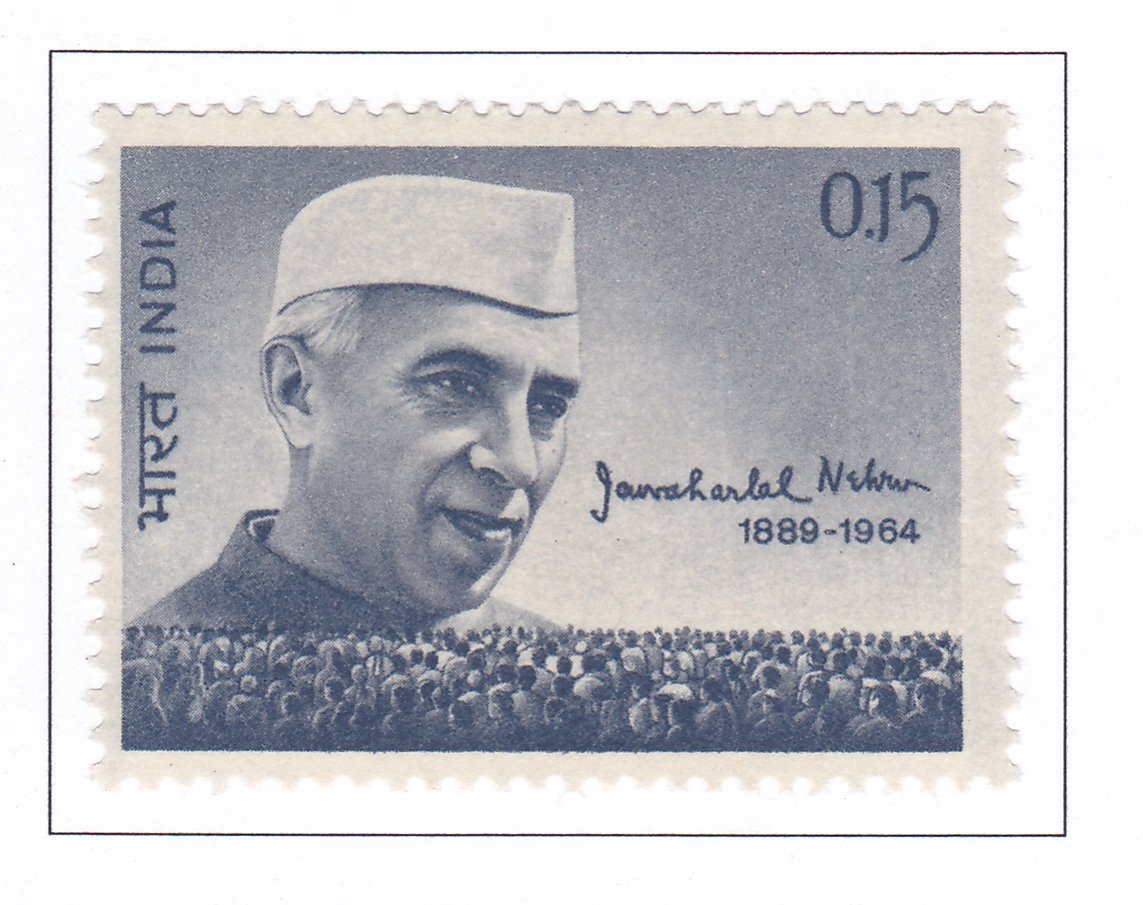Jawaharlal Nehru 1889-1964

Technical Data
| Date of Issue | June 12, 1964 |
|---|---|
| Denomination | INR 0.15 |
| Quantity | 20,000,000 |
| Perforation | comb 13½ x 13 |
| Printer | Security Printing Press, Nashik |
| Watermark | No Watermark |
| Colors | Dark blue grey |
| Catalog Codes |
Michel IN 373 Stamp Number IN 388 Yvert et Tellier IN 174 Stanley Gibbons IN 487 |
| Themes | Commemoration | Famous people | Headgear | Men | Politicians | Statesmen |
The passing of Jawaharlal Nehru on May 27, 1964, marked the end of an era in India’s history, leaving the nation in profound grief and loss. Nehru’s ideals and values, however, will endure for generations to come. His contributions to the freedom and progress of the country are unparalleled, and his memory will forever inspire us.
President Radhakrishnan, in his message from Rashtrapati Bhavan, urges us to keep Nehru’s torch alive and follow the path he illuminated for us. Lal Bahadur Shastri, from the Prime Minister House, emphasizes that tangible tributes like memorials and monuments are essential, but the true memorial to Nehru lies in continuing his work and conducting ourselves in a manner that would make him proud.
The Ministry of Communication and Law, represented by A.K. Sen, pays homage to Nehru through a commemorative stamp, highlighting that his spirit will continue to guide us on our journey. The Gazette of India, through a notification from the President Secretariat, recognizes Nehru’s monumental contributions to India’s freedom struggle, his role as the chief architect of modern India, and his dedication to world peace and progress.
The notification provides a comprehensive overview of Nehru’s life, from his upbringing in Allahabad to his education in England, his association with Mahatma Gandhi, and his pivotal role in India’s struggle for independence. It details his contributions to international relations, economic planning, and social reform, emphasizing his commitment to secularism, unity, and the upliftment of the less privileged.
Nehru’s literary works, including “Autobiography,” “Letters from a father to his daughter,” “Glimpses of World History,” and “Discovery of India,” are highlighted as enduring contributions to literature. The notification concludes with a poignant epitaph suggested by Nehru himself, expressing his deep love for India and its people.
Through these messages and notifications, Nehru’s legacy is celebrated and his memory honored, underscoring his indelible mark on India’s past, present, and future.
